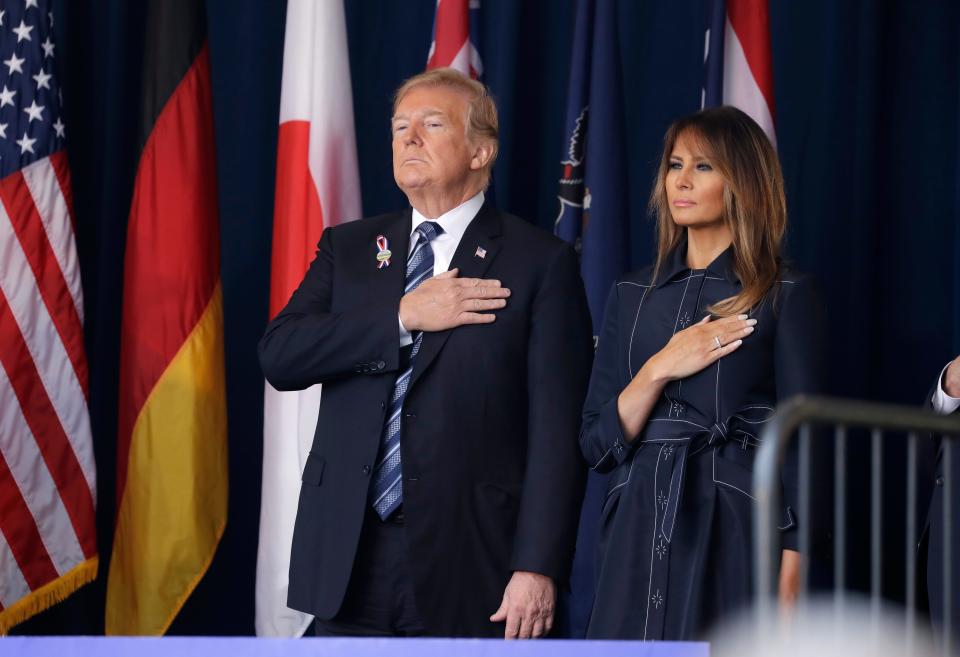Trump contracts COVID-19: Presidential illness is a recurring concern in American politics
Early Friday morning we learned that President Donald Trump and his wife, Melania Trump, had contracted the COVID-19 virus and would be forced to retreat into quarantine for a two week period. While his symptoms are reported to be mild, he is 74 years old and part of a vulnerable population. Were he to suffer complications and be unable to perform his duties, it would recall circumstances that the nation has faced a number of times in the past, beginning with the first president to suffer a fatal illness, William Henry Harrison.
After delivering the longest inaugural address in a cold rainstorm, the 68-year-old Harrison succumbed to pneumonia and died just 31 days later. As the first president to die in office, his death created a novel problem that America had never encountered, and the transition from Harrison to Vice President John Tyler established a set of precedents for future situations in which a president was unable to serve.
Opposed by Harrison’s cabinet who saw him as serving only as a kind of regent, Tyler boldly asserted that he was indeed the new president. Tyler also had the time to ponder his moves during Harrison’s month-long illness and had gotten inside information that Harrison would not survive.

The next time the nation faced the illness of a president was when Zachary Taylor became ill after overeating at the ceremony of laying the cornerstone for the Washington monument on July 4, 1850. He lingered only five days before succumbing to botched medical treatment. The duties of the office devolved upon Vice President Millard Fillmore who would serve out the remainder of Taylor’s term and, despite his most energetic efforts, did not receive the Whig party nomination for president in 1852.
Incapacitated by a short illness
In both of these early example of presidential inability, the period of incapacity was brief. The next two deaths in office were by assassination. Abraham Lincoln never recovered after being shot at Ford’s Theater in Washington. James A. Garfield was shot at a railroad station in Washington on July 2, 1881, and lingered until Sept. 19.
While Garfield lingered, a number of conspiracy theories arose including one that had said Vice President Chester Alan Arthur was part of a plot by the corrupt New York Senator Roscoe Conkling, who would use Arthur as his front man in the White House. Despite the earlier presumption that the presidency would automatically devolve upon the vice president pursuant to Article II, Section 1 of the Constitution, suspicion surrounding Arthur’s ties to Conkling prompted challenges to his legitimacy.
Trump hit with COVID-19: Anyone can get sick. Anyone can spread the deadly disease.
The first of a series of more complicated episodes of presidential disability came in 1893 with the clandestine surgery on President Grover Cleveland for cancer performed on a friend’s yacht. The country was in the grip of a financial panic and it was feared that if the gravity of the president’s illness became known it would deepen the recession. The assassination of Cleveland’s successor, William McKinley, who was shot after winning a second term in 1901 survived for only eight days, a fate more akin to Garfield’s
Actively deceiving the public
Woodrow Wilson’s exhausting cross-country campaign to persuade the Senate to ratify the Versailles Peace Treaty after World War I brought on a stroke in the Fall of 1919 that resulted in paralysis. His wife, Edith, sought to conceal Wilson's condition from the public, but it became public in 1920. Wilson refused to resign but Vice President Thomas Marshall declined to assume the office because Congress had not declared the office vacant and Mrs. Wilson, who was managing the affairs of the president, resisted replacing her husband and kept from the public the gravity of his condition.
Trump's COVID-19 opportunity: Stop mocking masks. Embrace them instead and save lives.
The administrations of both president Franklin Roosevelt and John F. Kennedy were shrouded in secrecy over the medical problems suffered by the two men: FDR’s paralysis from polio and his deteriorating health during his bid for a fourth term in 1944, and John F. Kennedy’s Addison’s disease, an autoimmune ailment in addition to agonizing back pain. It was after Kennedy’s assassination that the 25th Amendment was ratified to clarify presidential succession.
The seriousness of the heart attack suffered by President Dwight Eisenhower in 1955 was deftly played down while Vice President Richard Nixon assumed many of the presidential duties. Confusion attended the attempt on the life of President Ronald Reagan in 1981 after only 70 days in office when Secretary of State Alexander Haig made the announcement “I am in control here.” He later clarified that he did not imply that he was in the line of transition.
While there has been no serious talk about invoking the 25th Amendment, that may become a topic of conversation if Trump’s condition worsens. The 25th Amendment has already been invoked three times by presidents going under anesthesia: Ronald Reagan in 1985 and George W. Bush in 2002 and 2007.
If invoking the 25th Amendment becomes necessary, it will trigger a complicated process made more problematic by the upcoming election.
Ross K. Baker is a distinguished professor of political science at Rutgers University and a member of USA TODAY's Board of Contributors. Follow him on Twitter: @Rosbake1
You can read diverse opinions from our Board of Contributors and other writers on the Opinion front page, on Twitter @usatodayopinion and in our daily Opinion newsletter. To respond to a column, submit a comment to letters@usatoday.com.
This article originally appeared on USA TODAY: Donald Trump has COVID-19: A history of presidents ill in office


